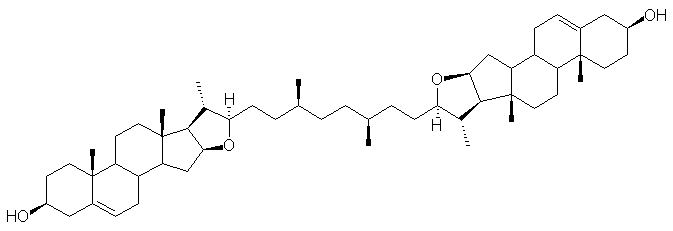
INFLUENCE OF BOLAAMPHIPHILIC STEROID DIMER ON FORMATION AND STRUCTURE OF BILAYER LIPID MEMBRANES
Sławomir Kalinowski 1, Zenon Łotowski 2, Jacek W. Morzycki 2
1 University of Agriculture and Technology, Department of
Chemistry, 10-957 Olsztyn-Kortowo, Poland
2 University of Białystok,
Institute of Chemistry, Al. J. Piłsudskiego 11/4, 15-443 Białystok, Poland
The self-assembling formation process and the electromechanical properties of bilayer lipid membranes were investigated. The membranes were made of phosphatidylcholine with addition of the following steroid dimer:

An external voltage applied to bilayer lipid membranes causes the electrocompression phenomenon. Membranes containing solvent inside the hydrophobic layer have high electrocompressibility. The solvent present inside the membranes is moved to the Plateau-Gibbs border surrounding the bilayer. Presence of the bolaamphiphilic steroid dimer in the membranes decreases the electrocompressibility about 20 times. The dimer molecules “span” monolayers of the membranes forcing lower thickness during their formation and restrict mobility of solvent inside the membranes. Addition of the dimer improves properties of the membranes, which are applied as model biomembranes and support for sensors based on biomembrane molecules.